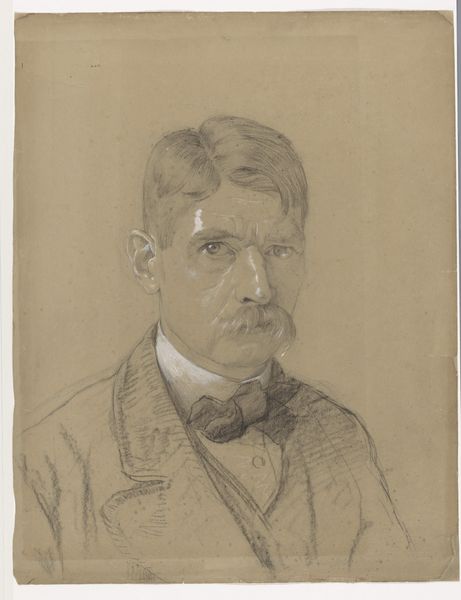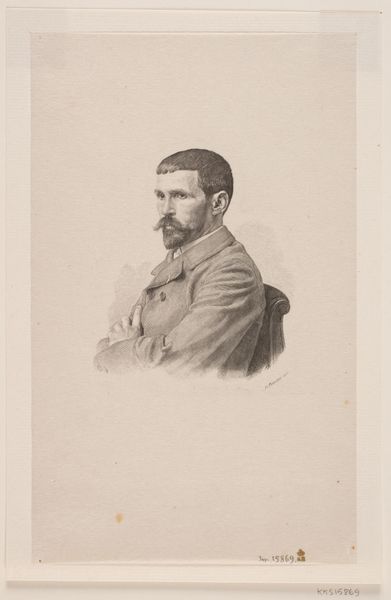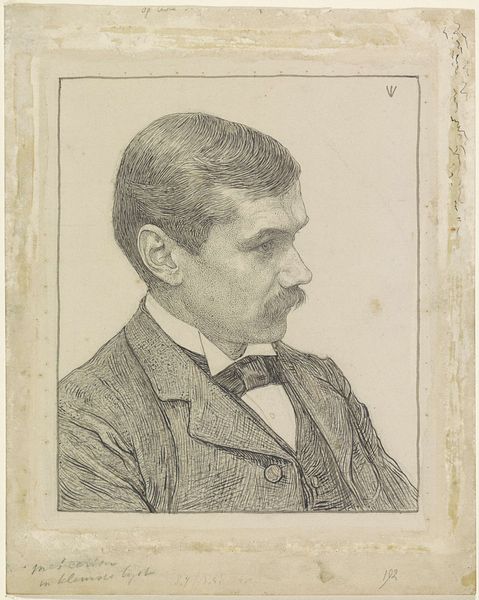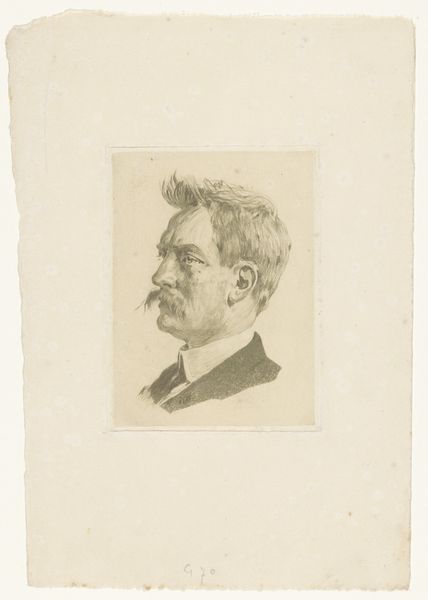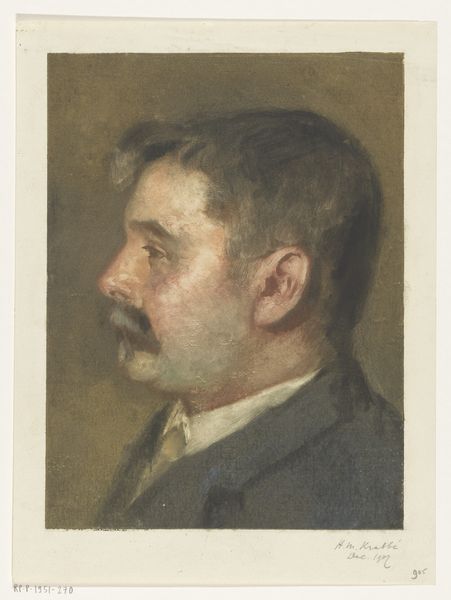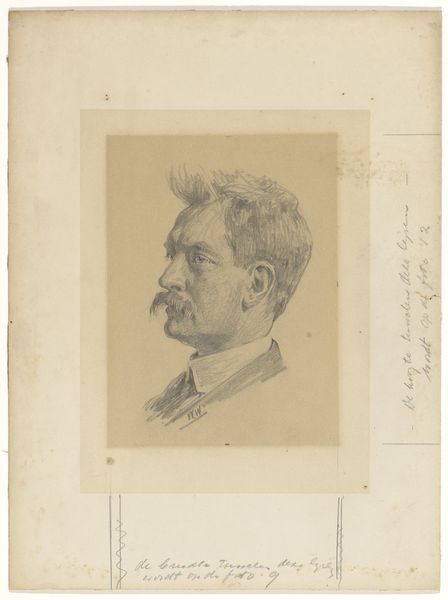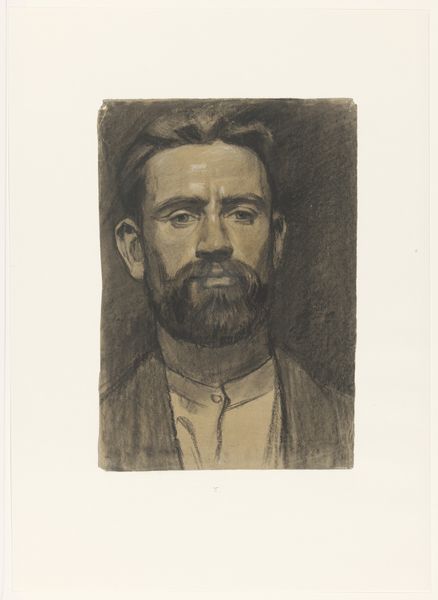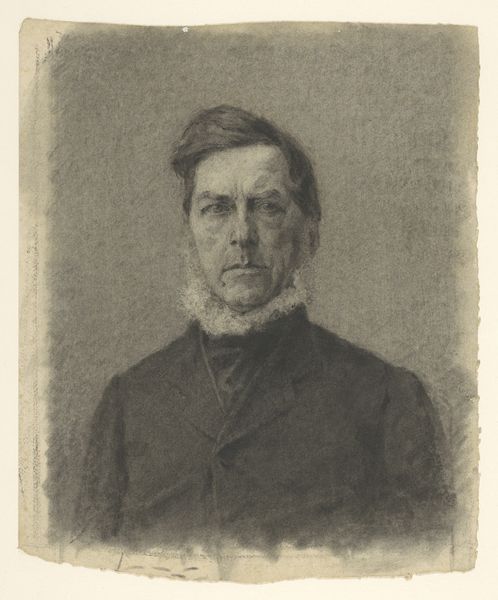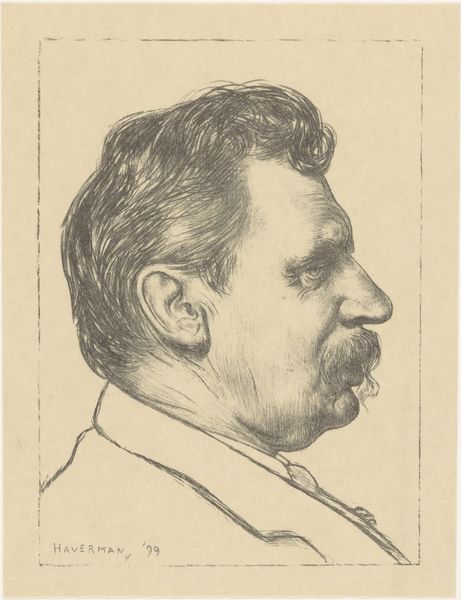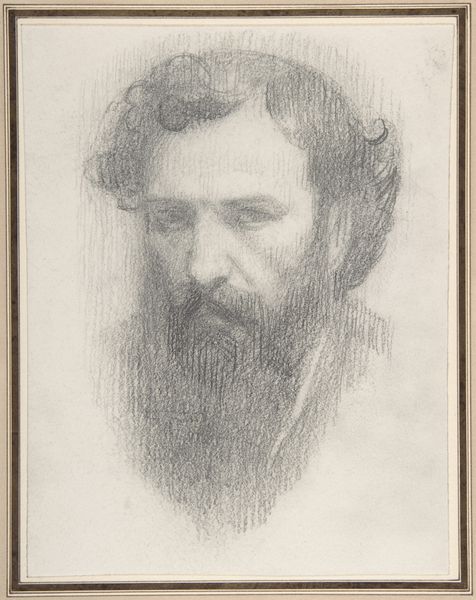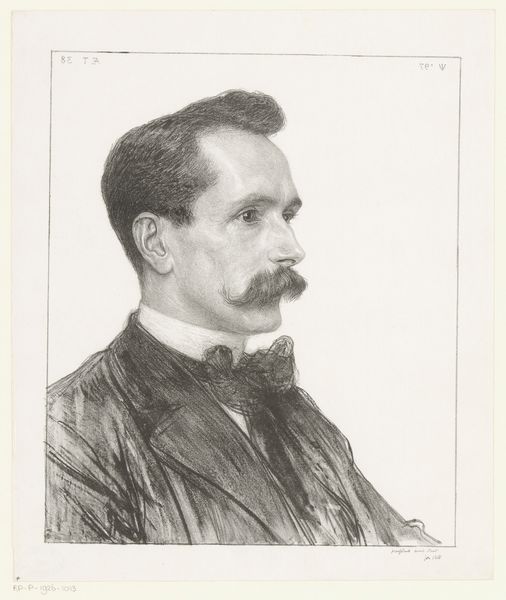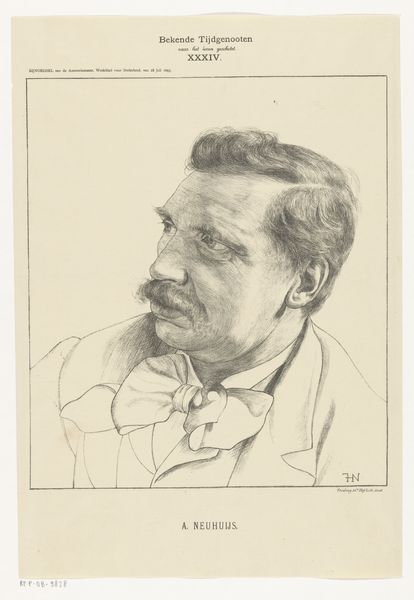
Copyright: Public Domain
Editor: Here we have Karl von Pidoll's "Self-portrait," a red-chalk drawing from 1877. I find it striking how such a simple medium conveys so much depth, particularly in his eyes. What stands out to you when you look at this portrait? Curator: What immediately strikes me is the masterful control of line and tone. Observe how the artist employs hatching and cross-hatching to build up volume and create a sense of three-dimensionality. The texture of the hair and beard is rendered with remarkable precision, isn't it? Editor: It is! The soft blending of the chalk gives it a certain… warmth, I think. It doesn't feel stiff like some academic portraits can. Curator: Precisely. While rooted in academic tradition, note how Pidoll subtly departs from a purely mimetic representation. Consider the deliberate asymmetry of the composition and the somewhat averted gaze. These elements introduce a degree of psychological complexity, don't they? Do you see that in this picture? Editor: Yes, I think so. The angle does make him seem more thoughtful and maybe a little bit vulnerable. So, it’s not just about accurately portraying his likeness? Curator: Not at all. Consider the inherent qualities of the medium itself. The chalk lends itself to a softness and subtlety that oil paint, for example, might not achieve. The artist exploits this characteristic to create a sense of intimacy and immediacy. The tonal gradations allow us to read volume, mass and space and the quality of the form it creates. Editor: That makes sense. I hadn't really thought about how much the choice of materials influences the overall feeling. Curator: Indeed. It is in the interplay of form, line, tone, and material that the true meaning of the work resides, providing its enduring power. Editor: I learned a lot about looking closely and noticing all those subtle artistic choices and also that you were using a formalist lens. It changes the way you perceive the artwork! Curator: Exactly! Attending to the artist's visual decisions always rewards close and repeated examination.
Comments
No comments
Be the first to comment and join the conversation on the ultimate creative platform.
